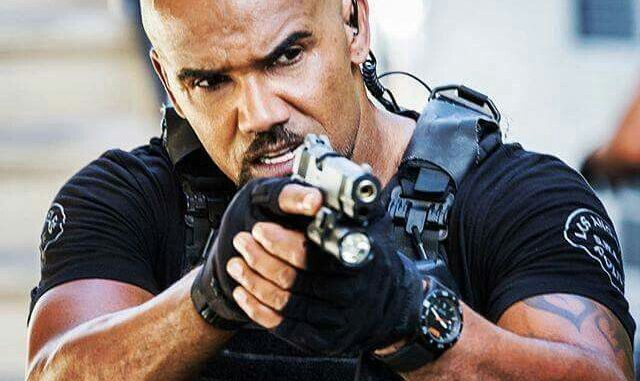
The Emotional Depth of “S.W.A.T.”
“S.W.A.T.” isn’t just another cop drama; it’s a series packed with emotional weight and heart-wrenching moments. While the adrenaline rush of high-stakes missions keeps viewers on the edge of their seats, the underlying stories of loss, sacrifice, and camaraderie hit home even harder. Let’s dive deep into the emotional landscape of this beloved series and explore why it resonates so profoundly with audiences.
Understanding the Premise of “S.W.A.T.”
A Brief Overview
“S.W.A.T.” follows the life of Sergeant Daniel “Hondo” Harrelson and his elite team of SWAT officers as they tackle dangerous situations in Los Angeles. However, amid the action-packed scenes and tactical maneuvers, the series delves into the personal lives of its characters, showcasing their struggles, relationships, and emotional turmoil.
The Balance of Action and Emotion
Why Action Isn’t Enough
Many viewers tune in for the thrilling action sequences, but what keeps them coming back is the emotional storytelling. Each episode unfolds personal stories that highlight the officers’ vulnerabilities and the impact of their dangerous jobs on their mental health and relationships.
The Complexity of Hondo
Hondo’s Journey
Sergeant Hondo, played by Shemar Moore, is a character who embodies both strength and sensitivity. His journey is marked by deep personal challenges, from navigating his leadership role to dealing with the aftermath of traumatic incidents. His character illustrates the internal conflicts faced by those in high-pressure jobs, making him relatable to viewers who may have their own struggles.
Supporting Characters with Depth
More Than Just Sidekicks
The supporting cast of “S.W.A.T.” adds layers of emotion to the narrative. Characters like Chris and Street grapple with their pasts, and their personal stories often intertwine with the central plot. For instance, Chris’s struggle with her identity and her past decisions often leads to poignant moments that reveal the show’s underlying themes of redemption and acceptance.
Real-Life Issues in “S.W.A.T.”
Addressing Mental Health
One of the most impactful aspects of “S.W.A.T.” is its willingness to confront real-life issues, particularly mental health. The show doesn’t shy away from depicting how the pressures of the job can lead to anxiety, PTSD, and other mental health challenges. This portrayal is essential in destigmatizing these issues and opens the door for discussions about mental health in law enforcement and beyond.
The Impact of Loss
Heart-Wrenching Story Arcs
Throughout its seasons, “S.W.A.T.” has dealt with significant themes of loss and grief. Whether it’s losing a colleague in the line of duty or facing the consequences of tough decisions, these story arcs resonate with viewers on a personal level. They remind us that behind the badge, officers are human, and they bear the weight of their decisions.
The Power of Camaraderie
Friendship Amidst Chaos
In the chaos of their work, the bonds between the characters provide a source of strength. Their friendships serve as a reminder of the importance of support systems in high-stress environments. Viewers witness the team’s unwavering loyalty to one another, showcasing how camaraderie can be a lifesaver during tough times.
Highlighting Community Impact
Beyond the Badge
“S.W.A.T.” also emphasizes the connection between officers and the communities they serve. Through various episodes, the show highlights the struggles of the neighborhoods and how the SWAT team strives to create positive change, all while dealing with their own emotional battles. This connection adds a layer of realism and relatability that resonates deeply with viewers.
Themes of Redemption
Second Chances
Redemption arcs play a significant role in “S.W.A.T.” Characters often face moral dilemmas and past mistakes, leading to moments of growth and change. These narratives allow viewers to reflect on their own experiences and the possibility of second chances, reinforcing the idea that it’s never too late to change for the better.
The Emotional Conclusion of Episodes
Leaving an Impact
Each episode of “S.W.A.T.” often concludes with powerful, emotional moments that linger long after the credits roll. Whether it’s a heartfelt conversation among teammates or a moment of reflection for Hondo, these conclusions reinforce the emotional depth of the series, reminding viewers of the real-life implications of the events depicted.
Why “S.W.A.T.” Stands Out
A Unique Blend of Genres
While many shows focus solely on action or drama, “S.W.A.T.” skillfully blends both elements. The result is a series that appeals to a broad audience, offering thrilling moments alongside poignant storytelling. This unique blend is what sets “S.W.A.T.” apart from other cop dramas.
Fan Reactions and Community Engagement
A Dedicated Fandom
The emotional narratives in “S.W.A.T.” have fostered a dedicated fanbase that resonates with the characters and their journeys. Social media platforms are alive with discussions, fan theories, and emotional reactions to the show’s pivotal moments, showcasing how deeply viewers connect with the series.
Conclusion: More Than Just Entertainment
“S.W.A.T.” is more than just an action-packed series; it’s a heartfelt exploration of the complexities of life as a law enforcement officer. Through its emotional storytelling, the show delves into themes of loss, mental health, friendship, and redemption, making it a relatable experience for viewers. As audiences tune in week after week, they are not just watching a show; they are engaging with stories that reflect their own struggles and triumphs.
FAQs
- What makes “S.W.A.T.” different from other cop dramas?
“S.W.A.T.” uniquely blends action with deep emotional storytelling, exploring characters’ personal lives and mental health. - Who is the main character in “S.W.A.T.”?
The main character is Sergeant Daniel “Hondo” Harrelson, played by Shemar Moore. - Does “S.W.A.T.” address mental health issues?
Yes, the show portrays the mental health challenges faced by officers, promoting discussions about mental well-being. - What themes are prevalent in “S.W.A.T.”?
The series explores themes of loss, redemption, camaraderie, and the connection between law enforcement and the community. -
How does “S.W.A.T.” engage with its fanbase?
Fans actively discuss the show on social media, sharing reactions, theories, and emotional responses to episodes.
